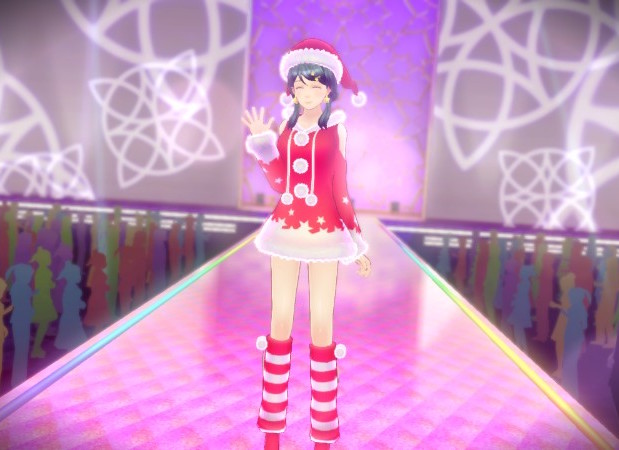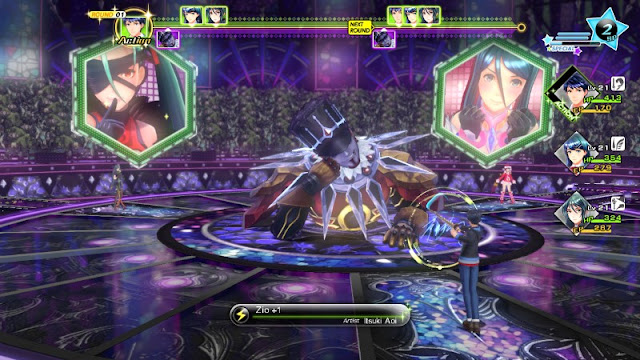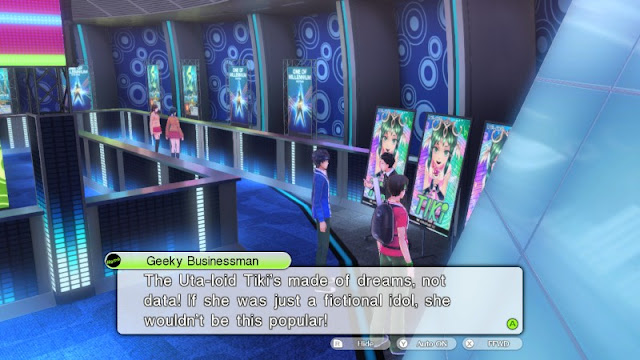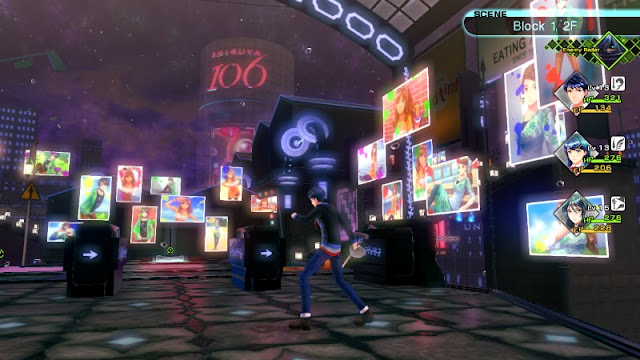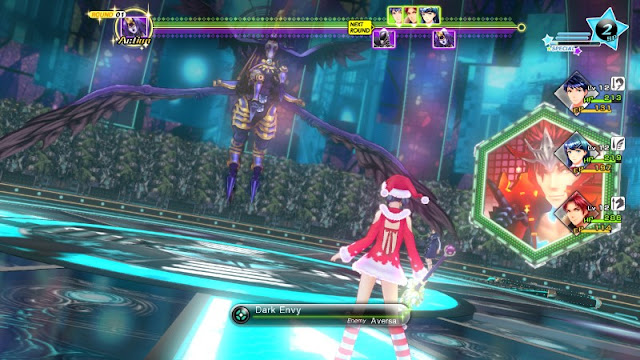Review by Matt S.
As a Persona game in all but name, Tokyo Mirage Sessions #FE follows that series’ penchant for bright, colourful aesthetics, and complex storytelling that mixes themes around personal development and cultural reflection. The difference is that where the Persona games focus on personal growth stories of kids through high school, Tokyo Mirage is instead a game about Japan’s idol culture and celebrity.
Related reading: On the PlayStation 4, Omega Quintet also has a Japanese idol theme. Matt’s full review.
Idols are a concept quite unique to Asia (and far more prominent in Japan than anywhere else), and Japan has a complex relationship with it. Essentially, idols are manufactured celebrities; singers, actors or models selected more for their marketability than talent in this chosen fields (and often they don’t actually choose their field). They belong to agencies, than manage their careers to the most minute of details, and are expected to behave according to strict behavioral guidelines. For instance, not long ago one of the girls from AKB48 – the most famous idol group of all – made headlines globally because she shaved her head as an apology to fans for being caught with a man; AKB48 girls are not allowed to date, else their fans get jealous and for that to then destroy the fantasy that the girls represent.
You might ask why anyone would want to become an idol, or alternatively why anyone would be interested in supporting such manufactured celebrity. It’s because the idol culture is one built around fantasy and aspiration, on both sides. For the idols (both men and women), it’s a chance to realise the dream of celebrity – to have the most adoring fans and perform at sell out concerts. We all dream of doing this when we sing karaoke in the shower, but these people get to live this dream, and do so with minimal risk; once they’re ‘discovered’ by an agent their work in promoting themselves is largely done. It’s all but guaranteed celebrity.
For the fans, idols are equally aspirational. Idols are, via their marketing machine, far more approachable than the typical celebrity, with the girls and guys regularly meeting with – and interacting with – fans that are willing to spend obscene amounts of money on special-grade concert tickets. Those same fans will buy boxes of music CDs, but not because they want many copies of the same music. Those CDs come with voting slips that allow the fan to elevate their favourite girl up the rankings within the idol group. Fans feel an intense ownership over the fate of “their” girls and guys, and that ownership comes from their being active participants in the sub-culture.
It’s obsessive, yes, and dangerously so. It leads to tragedy at times, as we saw recently when an idol was attacked by a fan, and it wasn’t the first time such a thing has happened. But it’s a quality to Japanese entertainment that has been around for a very long time; fans of the all-woman Takarazuka Revue theatre actors as far back as 1913 wear sashes and other such garments to represent their “fandom” of a particular performer.
Tokyo Mirage Sessions takes place within that context. A young boy and girl find themselves thrust into the world of idols when their talent for the work is discovered. Not because they are good at performing, though. Oh no. In Tokyo Mirage’s world, idols are more than just performers; they have the capacity to enter the world of hostile mirages, which seek to dominate the real world by draining all colour and energy out of it. As defenders of the common people that elevate them to a god-like status, idols fight back against the existential crisis that their mirages represent. They do this by forming bonds with spirit-weapons, which take human form outside of combat, and are trusted allies and emotional confidants (a little like the Persona of the Persona series).
Just like in each Persona game, as the growing ensemble of idol-heroes takes on the fight, they find themselves confronted with their fears and insecurities. Our main protagonist, Itsuki Aoi, helps them to overcome these fears, as the de facto leader of the group, and in doing so, the bond that he has with each member of the group deepens and flourishes. On the surface, Tokyo Mirage appears to be addressing more superficial concerns than the Persona games, where characters dealt with the deeply profound realities behind their sexuality or familial dedication, but about half way through the game, and after completing some side quests, Tokyo Mirage’s characters really flourish as nuanced personalities. Perhaps one of the points of the game was to show the wall between the superficial creation idol and his or her more true self. If that wasn’t a deliberate theme it was a heck of a coincidence, but it was one of my takeaways either way.
Tokyo Mirage sessions also functions as an effective deconstruction of the overall idol culture, though it’s a fairly uncritical and upbeat one. It’s happy to show how absurd idol culture can be, both in terms of what performers go through and the highly political environment within idol circles, and also the behaviour of fans and utter devotion they have for their favourite idols. At the same time, the game stops short of showing the nasty side effects that come from obsessive fans, nor the toll that having every aspect of public life managed and under scrutiny can have. Because the narrative recognises how ridiculous idol culture is, it’s not naive, but rather deliberately ignorant to the realities of idols in order to create a story that is, on balance, heroic and positive.
The game casts a wide net, too, also reflecting the emergence of virtual idols through its narrative. Indeed, one of the major characters in the game, (Tiki), is an explicit reference to Hatsune Miku, and the writers were even kind enough to throw me in the game! One of the early side missions has the team help ‘Miku’ track down one of her biggest fans, ‘Tiki=waifu”. Turns out that Tiki=waifu is a woman in this game, but the way she talks is totes me in a game. Thanks, Nintendo and Atlus!
Digression aside, I would suggest that Tokyo Mirage never quite gets around to dealing with the seedier and exploitative side of idol culture, because the Japanese tend to be less critical of it themselves than we are in the west. To them, the aspirational side of what idols represent is some noble or even heroic, and when events within the culture take a sour turn, it is because they are outliers. Using the JRPG genre as metaphor for the sense of heroism that exists around idols makes Tokyo Mirage one of the better games that we’ve seen on the topic. Where some other examples of JRPGs that use idols as a narrative motif, such as Omega Quintet, tend to forget about the idol side of life outside of cut scenes, Tokyo Mirage remains thematically consistent from start through to finish. Each battle, for example, is a performance, where the team of heroes fight in an arena to cheering audience. And if you’ve ever been to an idol performance, the fans are incredibly numerous and boisterous. As a consequence, this is a game that has an incredible amount of energy and vibrancy to it, despite being a traditional turn-based game under the hood.
Also similar to the Persona games is the way the dungeons reflect the personal and moral crises that the individual representing the end boss is grappling with. For example, one of the most striking levels in Tokyo Mirage is a dungeon where you’re looking to rescue models that have been imprisoned by a fashion photographer that has been possessed by a mirage. Lining the walls of the dungeon are fashion photos of girls, set against a chic blue environment reminiscent of a fashion show. There is no doubt whatsoever that you’re wandering through the torn psyche of a conflicted photographer, in other words.
This is a remarkably clever way for the developers to make otherwise generic dungeon design memorable. Persona 4 had randomly generated dungeons, which were nothing more than corridors and rooms, but where in any other game with random levels – most Mystery Dungeon games, for instance – I very rarely remember the specifics of the level, I will never forget Persona 4’s Risette level. Set in a strip club-like environment, and accompanied by the kind of thudding, moaning, groaning music you might expect from that environment, Risette’s level represented her inner turmoil more powerfully than any dialogue could do.
Tokyo Mirage takes the same approach, only it’s even better. The dungeons themselves are still largely featureless, and don’t offer much more to the player than spaces to run around and monsters to kill, but they are no longer randomised, and this means they can have puzzles running through them that help to emphasise the theme of the dungeon. To take the aforementioned photographer’s level, in the dungeon are giant cameras to navigate around, and to come into sight on one is to have it go off, instantly warping the party back to the start of the section. The puzzles aren’t going to test most people, but they help to give the dungeons another dimension, and they are so thematically appropriate that it’ll be hard to go back and play games like Persona 4 now, because those dungeon sequences, already considered by most to be weak when compared to the storytelling, are just going to feel all the weaker now.
The aesthetics help to support the rich thematics that run through Tokyo Mirage Sessions, too, leading to a complete consistency that is as appealing at the end as it is the beginning. For anyone who has been to an AKB48 concert, or simply walked into a space like Akihabara, where idol culture runs thick, the first thing you’ll notice is the excess of bright colour that comes with it all. Energy, vibrancy and decadence are the platform that idol culture is sold on, and this transfers over to Tokyo Mirage Session, with environments that are busy on the eyes, but certainly difficult to ignore. Atlus has used this to clever effect in reflecting the depth of evil that the Mirages represent; whenever they attack, the world is sapped of colour. Most of the passers-by that give the impression of are bustling city are silhouetted in bold colours; an aesthetic effect and a clever way to make the cities busy while distinguishing the (silhouetted) non-interactive people from the (non-silhouetted) people that have something to say. But, when the Mirages attack, these people are drained of their colour and left lying around, unmoving from a lack of energy. For a game that avoids bloodshed, this is a clever, eerie way to reflect the raw danger the characters face, without actually killing anyone.
Battle animations are flashy and spectacular, and the cast is gorgeous. Atlus has always excelled in character design, and in recruiting popular character artist, toi8, to do the designs this time around, the ensemble cast are all distinctive, bright, attractive individuals. Each character has a range of different costumes that you can give them, too, which range from the amusing, to the classy, the hipster, and the sexy.
I can’t imagine a scenario in which anyone who has enjoyed a Persona game could not find something fundamentally appealing about Tokyo Mirage Sessions. And, given that I can’t imagine a reason that anyone could not enjoy a Persona game, It think this just about sums up my thought of the game; it might not have turned out to be the Fire Emblem Vs. Shin Megami Tensei title that we were teased all those years ago, but if anything it’s something better. Effortlessly, it’s the best game that has been released on the Wii U, and, given the games to come, discounting Zelda as an NX launch title, it will be the best game that will ever be released on the Wii U.
– Matt S.
Editor-in-Chief
Find me on Twitter: @digitallydownld

